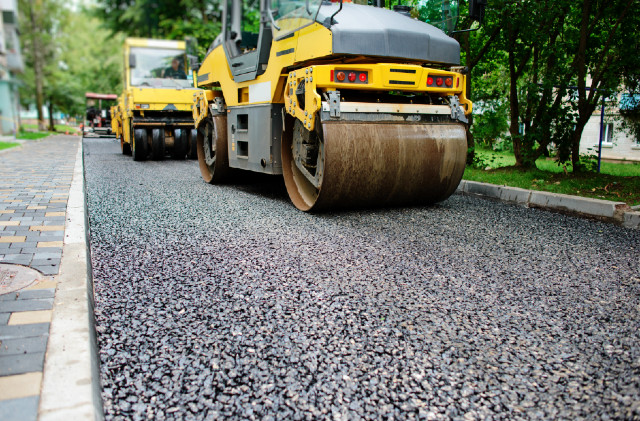Asphalt driveways are generally durable and work as a cost-effective choice for paving. Its most prominent feature is its long lifespan that doesn’t require experiencing severe maintenance issues. Additionally, it is more resistant to freeze and thaw cycles, unlike other paving options. However, that doesn’t mean that it’s entirely invulnerable to harsh weather conditions and environmental damage.
Dealing with Driveways
Like any construction and industrial material, asphalt has its pros and cons. However, it’s up to regular maintenance and care to ensure that it can last as long as possible.
In this article, we will share a three-step guide on caring for your asphalt pavements:
Step #1: Be Extra Cautious During the First Year
Asphalt typically takes two to three days to fully set before you can drive vehicles over it. Yet, it takes a full year for the material to fully cure. During this period, it’s necessary to avoid any permanent damage from the following:
- Oil spills
- Water damage
- Weed and grass growth
- Load from heavy machinery
- Objects with sharp touchpoints
The other difficult issues, such as environmental damage, are more troublesome to manage and are sometimes unavoidable. Nevertheless, it’s best to stay vigilant in detecting these instances so that you can remedy them immediately to avoid long-term damages.
Step #2: Observe Proper Maintenance
Keep in mind that your asphalt driveway won’t be impenetrable after the first year. Although it’s more durable and resistant to damage now, it still requires a seal coating to strengthen its protection against cracks and water damage.
You must seal-coat the asphalt every two to five years, depending on how much water damage its surfaces endure. During extreme weather, it may be better to coat it sooner than later. Small cracks on the surface can seem unnoticeable but can lead to deep still water that can break down the integrity of your driveway’s surfaces. It’s best to repair cracks immediately when possible, at least once a year, since it can invite seeds to grow under the right conditions.
To keep its form and colour, you should clean the driveway twice a year, even after putting salt in it. This is because freezing weather leads to the asphalt’s discolouration, which can force you to repair it with another layer too soon.
Plant growth is also detrimental to your asphalt’ driveway’s lifespan, which is why you need to repair cracks once you spot them. Likewise, adding a cement or topsoil border on either side of your driveway is one way to deter grass and weed growth from crossing over to your pavement.
Step #3: Schedule
You’ll need to do numerous tasks to ensure that your asphalt driveway will last for a long time. This includes resurfacing, seal-coating, removal, and installation. Although it’s manageable to repair minor damages, you need to seek out professional services for these other necessities. Doing it yourself can lead to poorly executed treatments, leading to a weaker pavement more prone to breaking. Know when to consult a professional to perform the more complex tasks that you shouldn’t worry about.
Conclusion
Many homeowners are guilty of overlooking their home’s exterior components, especially since most people today prefer to stay indoors. However, just because you rarely go out doesn’t mean your paving and backyard are free from damage. This is why you must give your property a quick look regularly to spot potential signs of deterioration. More often than not, the difficulties of maintaining your asphalt driveway can boil down to poor installation. The sooner you spot potential issues, the less likely you’ll have to pay for an expensive renovation job!
Letting amateurs handle your exterior’s maintenance can lead to even more costly renovations. This is why you should only rely on experts to do the job. If you’re a homeowner who needs an asphalt driveway installation in Edmonton, AB, get in touch with us today to see how we can help!


Recent Comments